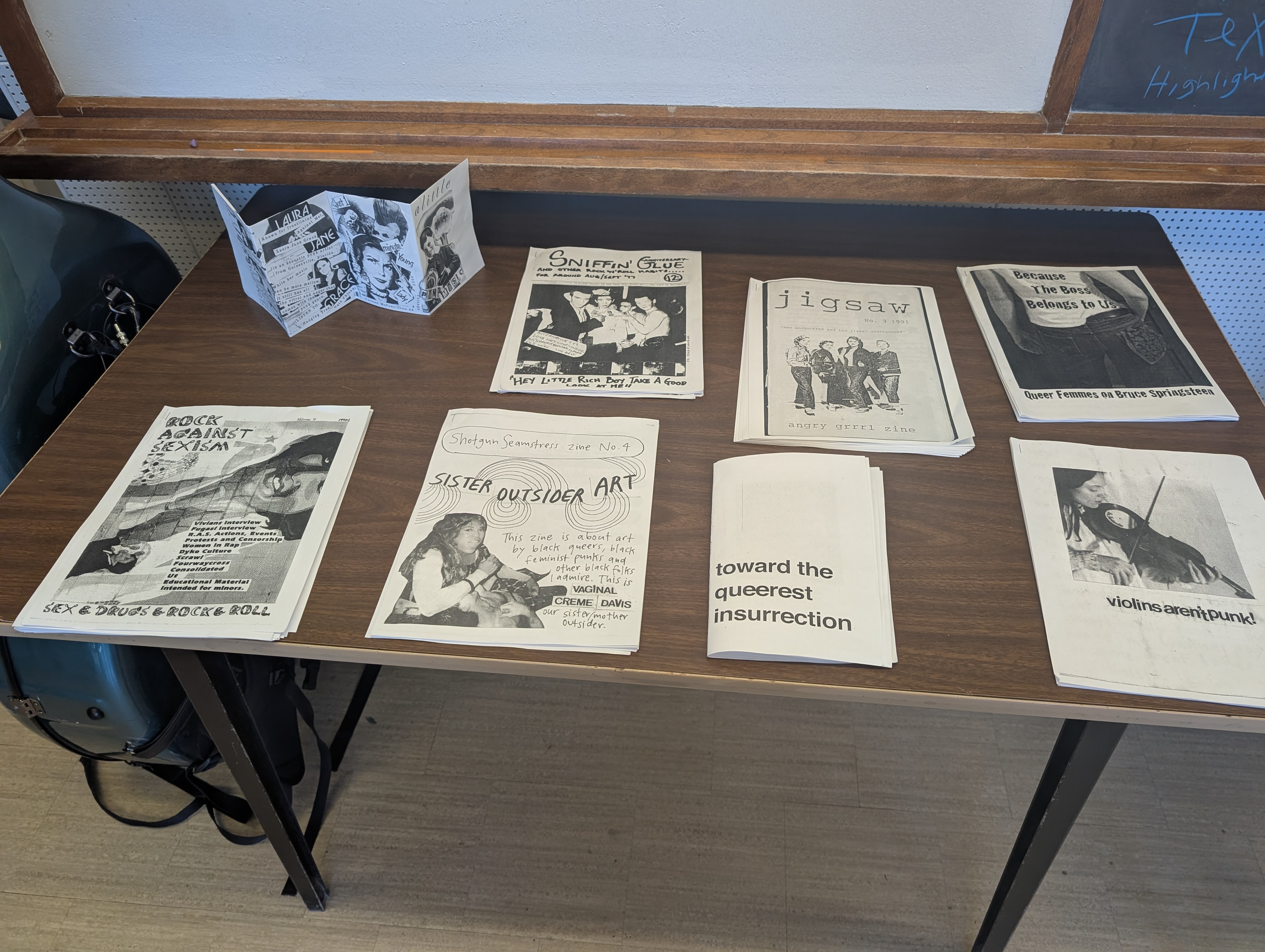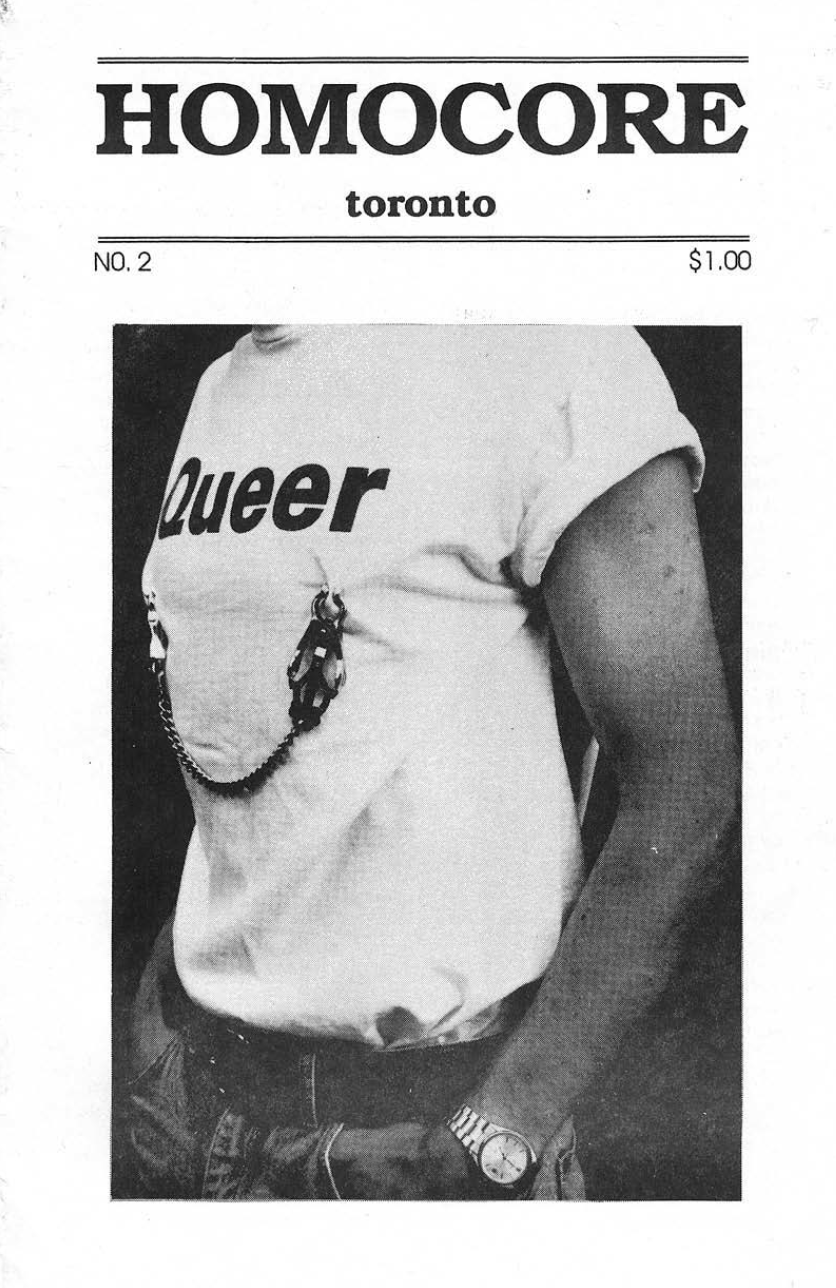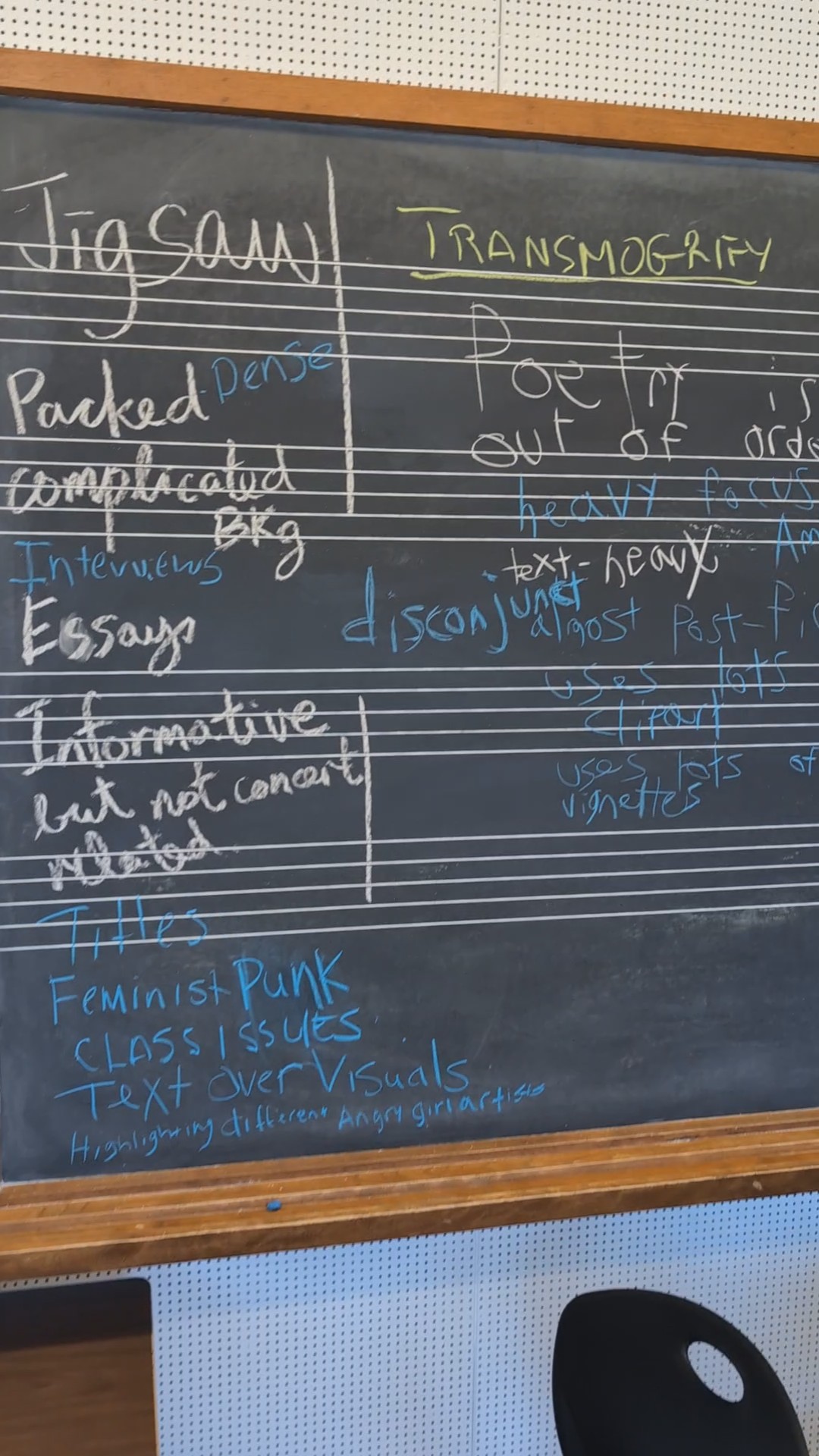When I first started planning a seminar on Music, Gender, and Sexuality for Winter 2025, I knew I wanted to do something a little different for coursework. I have always experimented with forms of alternative assessment in my teaching, incorporating podcasts, vlogs, creative writing, and, of course, musical responses. In the fall term of 2024, the Arts & Sciences Teaching and Learning team helped me to create a final assignment for the 200-person lecture course “The World of Opera”: I had groups of students design their own production concept for a scene of an opera. The results, which ranged from 3-D renderings of stage designs to fashion lookbooks, were immensely creative, and this inspired me to keep pursuing creative assessment formats for a smaller seminar class.
Since the 1970s at least, zines have been a significant and consistent mode of creating community around subcultures, alternative identities, radical politics, and also just special interests, from fashion to skateboarding. While the notion of a “zine” dates back as far as the 1930s, most of us will associate zines with the radical countercultural movements from the late 1970s onwards. Created by hand the old-fashioned DIY way, cutting and sticking and photocopying, zines of the last few decades of the 20th century were produced in small quantities, with often limited distribution: you might have been able to get a copy by mail, or pick one up at a local gig or bookstore, but they operated fundamentally outside mainstream channels of print media. Zines create community around shared ideals and interests, featuring everything from concert reviews to interviews, personal essays and poetry, collage, comics, and much more.

To incorporate zines more fully into my course, I aimed for them not just to be a format for a final assessment, but an integral part of how students learned throughout the term. In addition to academic and public readings, most weeks of the course had a zine assigned, encouraging all of us to approach the core themes of the class from diverse perspectives. Students gained insight into ultra-specific moments (say, the feminist punk scene in a town in the Pacific Northwest in the mid-1990s; see the iconic riot grrrl and Brass Lip zines), but also were able to connect the dots to the broader narratives in the history of music, gender, sexuality, and politics that we covered throughout the course.
In a week covering music and AIDS, for instance, we looked at excerpts from an issue of Diseased Pariah News, comparing how themes of satire, irony, and dark humour manifested as a strategy both in zine content and in popular music of the 1980s and 1990s that responded to the AIDS epidemic. Examining gender and sexuality in opera, we read the queer zine Parterre Box, satirising and reviewing the opera world from the inside. We delved into the modern world of digital zines in a segment on country music: The Pudding uses data visualization alongside informative writing to illustrate the history of how gender, racial, and sexual inequality manifest in the industry.
By incorporating zines as a regular feature of our course material, we were able to engage with a considerable range of formats and approaches. Fortunately, library collections across the world have diligently digitized many zine collections; among many other resources, zines are easily found on the Internet Archive; the DC Public Library has a specific Punk Archive collection; the Library of Congress has an extensive zine archive, and the POC Zine Project platforms intersectional work and marginalized voices. I relied heavily on the Queer Zine Archive Project, founded in 2003 to preserve queer zines and serve as a valuable resource. Just a short walk from the Faculty, The Toronto Zine Library, housed at the Tranzac Club on Brunswick Ave, offers open visiting hours for its collection.
 Zines are not things of the past (UofT students can join the Zine Club!): in both digital and print forms, they’re having something of a renaissance, as we continue to seek ways of forming communities through artistic media outside of mainstream platforms. While I wanted students to engage with some of the most well-known zines, such as those from the riot grrrl movement, it was also important to ground ourselves in Toronto’s own local queer history. In Homocore Toronto, we read a short essay on the evolving role of disco in gay culture from an early 1990s perspective, but also gained insights into the role that zines played in Toronto queer life at the end of the century.
Zines are not things of the past (UofT students can join the Zine Club!): in both digital and print forms, they’re having something of a renaissance, as we continue to seek ways of forming communities through artistic media outside of mainstream platforms. While I wanted students to engage with some of the most well-known zines, such as those from the riot grrrl movement, it was also important to ground ourselves in Toronto’s own local queer history. In Homocore Toronto, we read a short essay on the evolving role of disco in gay culture from an early 1990s perspective, but also gained insights into the role that zines played in Toronto queer life at the end of the century.
For our final class session, I organized a “Zine Spectacular,” which combined interactive activities followed by brainstorming and hands-on creating. Around our classroom, I arranged roughly 8 zine stations, physical copies and digital displays, ranging from Violins Aren’t Punk from Shotgun Seamstress and Because the Boss Belongs to Us, “queer femmes on Bruce Springsteen,” to the manifesto Towards the Queerest Insurrection. In small groups, students had 10 minutes to flip through the zine, and, putting the wraparound chalkboards in the EJB classrooms to full use, write down anything that resonated. For an hour, we walked around, switching groups, until the room was filled with chalked comments that we then discussed. Afterwards, students worked individually and together on brainstorming their projects, and others chose to take the hands-on approach. It’s not every day you get to have a kindergarten throwback day at university: armed with scissors and glue sticks, coloured pens, and an array of scavenged printed material, we took a free-form approach, collaging and creating, inspired by the zines we’d just been looking at. The proud teacher I am, I even have one a student made on my fridge at home.



There’s only ever so much we can achieve with one assignment, but I know that we all got something valuable out of the experience of learning and creating together, that helped to lay a solid groundwork for the stage where students would have to go off and make their final zines.
The results, as you can see in this exhibit, demonstrate the full range of creativity of our students: some interrogate classical music culture from the inside; some reflect on historical practices; some call attention to erased and marginalized voices in music history; some reflect on deeply personal experiences of how music, gender, and sexuality have intersected in their lives. By displaying them with the Music Library during Pride month, we’re making our own small contribution to the living archive of zines as alternative expression, and giving life to coursework beyond Quercus!
 Dr. Forner is currently a Sessional Lecture in the Faculty of Music. She is a musicologist and contemporary opera scholar with a focus on politics in music, and on contemporary reinterpretations of myth.
Dr. Forner is currently a Sessional Lecture in the Faculty of Music. She is a musicologist and contemporary opera scholar with a focus on politics in music, and on contemporary reinterpretations of myth.